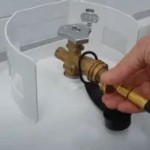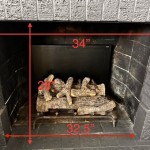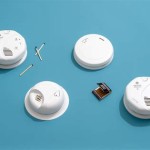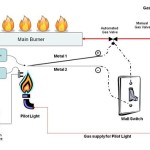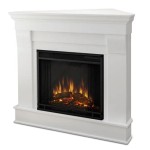How To Paint Brass Trim On Fireplace Doors
Brass trim on fireplace doors, while once a popular aesthetic choice, can sometimes appear dated or clash with a room's evolving decor. Painting the brass trim offers a cost-effective and relatively simple way to update the fireplace's appearance and bring it in line with a more modern or personalized style. This guide provides a comprehensive overview of the process, from preparation to application, ensuring a professional-looking finish that enhances the fireplace's visual appeal.
The success of painting brass trim hinges on meticulous preparation. Brass, known for its smooth surface, presents a challenge for paint adhesion. Without proper preparation, the paint is likely to chip, peel, or scratch, leading to a less-than-desirable outcome and requiring rework. Therefore, thorough cleaning, careful sanding, and the application of a suitable primer are critical steps that cannot be skipped.
Before commencing the painting process, gathering the necessary materials is essential. This includes items for cleaning, surface preparation, paint application, and personal protection. Having everything readily available will streamline the process and minimize interruptions.
Safety considerations are also paramount. Some materials, such as chemical cleaners and paints, can emit harmful fumes or cause skin irritation. Adequate ventilation and appropriate personal protective equipment are necessary to ensure a safe working environment.
Key Point 1: Preparation is Paramount
The foundation of any successful painting project lies in proper preparation. This is especially true when dealing with brass, a non-porous metal that requires specific steps to ensure paint adhesion. Neglecting this stage will invariably result in a subpar finish that is prone to failure.
The first step in preparing the brass trim is thorough cleaning. Over time, brass accumulates dirt, grime, grease, and oxidation, all of which can impede paint adhesion. Use a degreasing cleaner specifically designed for metal surfaces. Apply the cleaner according to the manufacturer's instructions, scrubbing the brass trim to remove any contaminants. Rinse thoroughly with clean water and allow the surface to dry completely.
After cleaning, the next step is to roughen the surface of the brass. This provides a "key" for the primer and paint to grip onto. Use fine-grit sandpaper, typically around 220-grit or higher, to lightly sand the entire surface of the brass trim. The goal is not to remove the brass entirely, but simply to create a slightly abrasive texture. Apply moderate pressure and sand in a consistent direction to avoid creating deep scratches.
Once sanding is complete, remove any sanding dust with a tack cloth or a clean, damp cloth. Ensure the surface is completely free of dust and debris before proceeding to the next step.
The final step in preparation is applying a suitable primer. A self-etching primer specifically designed for non-ferrous metals like brass is essential. This type of primer contains acid etchers that create microscopic grooves on the surface, providing an even better 'key' for the paint to adhere to. Apply the primer in thin, even coats, following the manufacturer's instructions. Allow the primer to dry completely before proceeding to painting. Usually, two coats of primer are recommended. If using an aerosol primer, shake the can well and hold it approximately 10-12 inches from the surface while spraying.
Masking is also a crucial aspect of preparation. Use painter's tape to carefully mask off any areas adjacent to the brass trim that you do not want to paint, such as the glass doors or the surrounding fireplace surround. This will help to ensure clean, crisp lines and prevent accidental overspray.
Key Point 2: Selecting the Right Paint and Application Techniques
Choosing the appropriate paint for the brass trim and employing the correct application techniques are vital for achieving a durable and aesthetically pleasing finish. Not all paints are created equal, and selecting a product formulated for metal surfaces is crucial.
The recommended type of paint for brass trim is a high-quality enamel paint or a specialized metal paint. Enamel paints are known for their durability, hardness, and resistance to chipping and scratching, making them well-suited for surfaces that are subject to wear and tear. Metal paints are specifically formulated to adhere to metal surfaces and provide excellent corrosion protection. Both types of paint are available in various finishes, such as matte, satin, semi-gloss, and gloss, allowing you to choose the desired aesthetic.
When selecting the paint color, consider the overall style of the room and the desired effect. Neutral colors, such as black, gray, or white, are popular choices for modern or contemporary spaces. However, you can also opt for bolder colors to create a statement piece. Ensure the paint color complements the existing decor and enhances the fireplace's visual appeal.
There are several methods for applying paint to brass trim, including brushing, rolling, and spraying. Brushing is a suitable option for small or intricate areas. Use a high-quality brush with synthetic bristles to ensure smooth and even application. Apply the paint in thin, even strokes, following the grain of the metal. Avoid applying too much paint at once, as this can lead to drips and runs.
Rolling is a good option for larger, flat surfaces. Use a small foam roller for best results. Apply the paint in thin, even coats, overlapping each stroke slightly. Avoid pressing too hard, as this can create roller marks. Similarly, avoid using a heavily loaded roller as this may create an orange peel effect on the final paint finish.
Spraying, either with an aerosol can or a paint sprayer, offers the most professional-looking finish. Spraying provides a smooth, even coat of paint without brush strokes or roller marks. However, it requires more skill and practice to achieve a satisfactory result. When spraying, hold the can or sprayer approximately 10-12 inches from the surface and move it in a smooth, even motion. Apply thin, even coats, overlapping each stroke slightly. Be sure to work in a well-ventilated area and wear a respirator to protect yourself from fumes.
Regardless of the application method chosen, apply multiple thin coats of paint rather than one thick coat. Thin coats dry faster and are less prone to drips and runs. Allow each coat to dry completely before applying the next. Refer to the paint manufacturer's instructions for drying times.
For enhanced protection and durability, consider applying a clear coat of sealant after the paint has dried completely. A clear coat will protect the paint from scratches, chips, and fading. Select a sealant specifically designed for metal surfaces and apply it according to the manufacturer's instructions. Ensure the clear coat is compatible with the type of paint used; a test in an inconspicuous area is recommended.
Key Point 3: Dealing with Obstacles and Achieving a Professional Finish
Throughout the painting process, various challenges may arise. Knowing how to address these obstacles and implement techniques for achieving a professional finish is crucial for a successful outcome.
One common issue is paint drips or runs. If drips or runs occur, do not attempt to wipe them away immediately. Instead, allow the paint to dry completely. Once dry, use fine-grit sandpaper to carefully sand away the drips or runs. Then, apply another thin coat of paint to blend the repaired area with the surrounding surface.
Another potential problem is uneven paint coverage. This can occur if the paint is not applied evenly or if the surface is not properly prepared. To correct uneven coverage, lightly sand the entire surface to create a smooth, uniform base. Then, apply another thin coat of paint, ensuring even coverage across the entire surface.
Brush strokes or roller marks can also detract from the overall aesthetic. To minimize brush strokes, use a high-quality brush with synthetic bristles and apply the paint in thin, even strokes, following the grain of the metal. To minimize roller marks, use a small foam roller and apply the paint in thin, even coats, avoiding excessive pressure.
To achieve sharp, clean lines along the edges of the brass trim, use painter's tape to carefully mask off any adjacent surfaces. After applying the paint, allow it to dry slightly before removing the tape. This will help to prevent the paint from peeling or chipping. Gently score the edge of the tape with a utility knife before peeling to create a cleaner separation. Pull the tape away at a 45 degree angle to prevent pulling the paint off.
When working with fireplace doors, consider detaching the doors from the fireplace for ease of painting. This allows you to work on a flat, stable surface and provides better access to all areas of the trim. If detaching the doors is not possible, take extra care to protect the surrounding fireplace surround from paint splatters and overspray. Use drop cloths or plastic sheeting to cover the area and protect it from damage.
After the paint has dried completely, inspect the surface for any imperfections. If necessary, touch up any areas that require additional attention. Use a small brush or a cotton swab to apply paint to small areas. Avoid applying too much paint, as this can create a noticeable blob.
Proper drying and curing time are essential for ensuring the paint adheres properly and achieves its full strength. Allow the paint to dry completely before handling the brass trim or reattaching the fireplace doors. Refer to the paint manufacturer's instructions for recommended drying and curing times. During the curing process, avoid exposing the painted surface to excessive heat or moisture, as this can compromise the finish and reduce its durability.
By following these steps and addressing any potential challenges, you can successfully paint the brass trim on your fireplace doors and achieve a professional-looking finish that enhances the visual appeal of your fireplace and complements your home's decor.

How To Spray Paint A Brass Fireplace Insert Erfly House

How To Spray Paint A Brass Fireplace Insert Erfly House

How To Spray Paint A Brass Fireplace Insert Erfly House

Easily Update Your Brass Fireplace Within The Grove

How To Paint Metal Fireplace Surround Four Generations One Roof

How To Spray Paint A Brass Fireplace Insert Erfly House

Some Like It Hot Centsational Style

How To Spray Paint A Brass Fireplace Bright Green Door

Brass Fireplace Update East Coast Creative

Fireplace Makeover Spray Paint Magic
Related Posts


